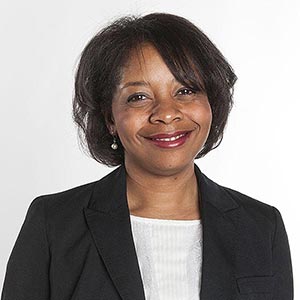It’s Time to Start Using Conflict to Your Team’s Advantage

If you’re a project manager, account executive or manage any client services-related job in an agency, you are often tasked with making sure your clients are “happy.” Of course, customer service and satisfaction are an important part of this role, but this begs the question, what exactly does making your client happy mean?
At Nebo, I tell our project management team that our clients must have a positive experience working with us. This means that we keep our word. We are responsive and communicate, and most importantly, we care — A LOT. This also means we should be honest, creating a partnership built from mutual respect and transparency, even when it means you need to have difficult conversations with your clients.
Even with these sage words of wisdom, it’s only natural to want to please your clients. Throughout my career, I’ve noticed this interesting dynamic. Let me know if this sounds familiar to you:
You work with your internal team to create a strategy or campaign based on best practices, the clients’ KPIs and brilliantly creative thinking. Finally, the team feels confident in their ideation and is ready to present to the client. Then everyone steps into the meeting, and something odd happens. Throughout the presentation, everyone on your team nods in agreement with every thought or comment the client offers, even if it sounds contradictory or like a bad idea.
If you’re presenting to a group of client contacts, you’ll even notice that the most senior ranking member of that client group is deferred to by even the rest of their own team. While this doesn’t happen every time, I’ve seen it enough to know it is common.
I am writing this blog post to tell you in simple terms — if you are blindly saying “yes” to every idea someone on your team has or that your client has, you will not make your client “happy.” The truth of the matter is that conflict, when handled effectively and professionally, leads to better ideas, better strategies, and most importantly, better results.
I am a huge music lover — there’s no genre that I don’t have on my phone. From R&B to classical to hip hop and rock ‘n’ roll, I love it all. I am a huge Beatles fan, and whether or not you like their music, you can’t argue that they haven’t left an indelible mark on the world. If you’ve ever read or watched documentaries about them or the individual band members, it’s clear they had a very collaborative approach to songwriting.

While McCartney and Lennon are credited with writing most of their big hits, Harrison and Starr also wrote songs. Still, they all added riffs, lyrics, beats, melodies, made adjustments, or added improvisions to each other's songs. They were as close as brothers and passionate about their art. Sometimes their collaborative sessions went smoothly; however, often, they butted heads as they argued, pushed back or pressed each other to be better. This unflinching approach to cooperation led to creating some of the most iconic music in modern history.
When working together as a team (and yes, you should also think of your client as part of your team), you must push each other. Blindly agreeing just to avoid conflict is not only harmful, it’s also a roadblock to perfecting an idea. Under the right conditions, healthy conflict can take what begins as a good idea and transform it into an amazing idea.
In case you’re wondering, hey Sarah, how do I do this without angering my team or client? Here’s a short list of how you can use conflict to make your projects better:
- Ask Questions
- Whether it’s an internal brainstorm or a meeting with a client, it’s often helpful to ask questions to either clarify comments or get the group thinking outside the box. Asking a question to the group as a devil’s advocate is another way to push against groupthink. This is a great way to foster conversation when people are reluctant to speak up.
- Whether it’s an internal brainstorm or a meeting with a client, it’s often helpful to ask questions to either clarify comments or get the group thinking outside the box. Asking a question to the group as a devil’s advocate is another way to push against groupthink. This is a great way to foster conversation when people are reluctant to speak up.
- Watch Body Language
- During a presentation, keep an eye on everyone in the room. Watch out for the subtle non-verbal clues. For example, did your client raise an eyebrow on a specific slide? Did your team member tap their finger over a comment from your client? When you see those slight signals, pause and ask the person for their thoughts, questions, or concerns.
- During a presentation, keep an eye on everyone in the room. Watch out for the subtle non-verbal clues. For example, did your client raise an eyebrow on a specific slide? Did your team member tap their finger over a comment from your client? When you see those slight signals, pause and ask the person for their thoughts, questions, or concerns.
- Check Your Ego at the Door
- When giving feedback, presenting an idea or responding to an observation, remember to respect everyone’s opinion. As I mentioned earlier, you are part of a team, and you share one common goal — the success of the campaign. No idea is above improvement, even if you think it’s genius. Listen, but don’t be afraid to stand up for your thoughts if it’s built around solid research or industry standards. Be happy that you’re a part of an energetic team of marketers who are pushing each other to do the best work possible.
- When giving feedback, presenting an idea or responding to an observation, remember to respect everyone’s opinion. As I mentioned earlier, you are part of a team, and you share one common goal — the success of the campaign. No idea is above improvement, even if you think it’s genius. Listen, but don’t be afraid to stand up for your thoughts if it’s built around solid research or industry standards. Be happy that you’re a part of an energetic team of marketers who are pushing each other to do the best work possible.
- Express Yourself in a Professional Manner
- In agency life and business, you must not be afraid to speak up. Most of us that work in marketing are not shy people, but some feel less confident going against the grain. It’s human nature to want consensus, but remember, the road to hell is paved with good intentions. As long as you keep it professional in tone and draw from your knowledge, experience and expertise, you can use conflict to better your project.
I know that none of us walk into presentations and meetings, saying to ourselves, I’m going to agree with everything the client says. It’s a subconscious action in the back of our brains because we simply want to please our clients. If your client has a great idea, go ahead and nod right along, but if you have concerns, questions, thoughts, or ideas to add to their comments, don’t be afraid to speak up! Foster an environment where everyone feels comfortable bringing their ideas or their dissension to the table, and you will only be better as a result of it.

Comments
Add A CommentThe customer will not be "happy" if you just agree with every suggestion they make dordle or one made by a member of your staff. The fact is that improved ideas, methods, and, most crucially, outcomes are possible as a consequence of conflict that is managed properly.